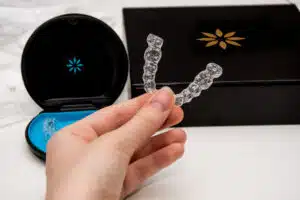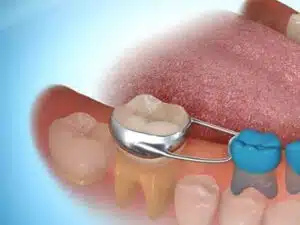Clear aligners like Invisalign are revolutionizing orthodontic treatment. These nearly invisible trays straighten teeth effectively without traditional braces. Understanding how Invisalign works involves diving into the science of tooth movement, material technology, and customized treatment plans. Let’s explore how this innovative solution achieves remarkable results.
How Invisalign Aligners Move Teeth
Invisalign uses a precise combination of force and timing to move teeth. The aligners apply gentle, constant pressure, encouraging teeth to shift into better positions over time. This process relies on the biological response of the periodontal ligament, the tissue connecting teeth to the jawbone. When pressure is applied, one side of the ligament compresses, and the other stretches. This triggers bone resorption and deposition, enabling the teeth to move gradually.
The Role of Aligner Design
Each Invisalign tray is slightly different from the one before it. These differences correspond to specific movements planned by your orthodontist. Wearing a new tray every one to two weeks encourages steady progress toward the desired alignment.
SmartTrack Material: The Secret to Comfort and Precision
Invisalign aligners are crafted from a patented material called SmartTrack. This thermoplastic was developed after testing hundreds of materials to ensure flexibility, durability, and effectiveness.
Key Benefits of SmartTrack Material
- Flexibility: It conforms snugly to teeth for a comfortable fit.
- Controlled Force: Delivers gentle pressure that moves teeth predictably.
- Transparency: Minimizes visibility, making aligners discreet.
SmartTrack’s unique properties allow Invisalign to achieve consistent and accurate results without compromising comfort.
Customized Treatment Plans
One of Invisalign’s standout features is its personalized approach. Every treatment begins with a thorough examination and digital scan of your teeth.
The Role of Digital Scanning
Instead of traditional moulds, Invisalign Cortez CO uses advanced 3D imaging technology. These scans create an accurate digital representation of your teeth, which orthodontists use to map out every step of your treatment.
With Invisalign’s software, your orthodontist plans the series of movements needed to align your teeth. This blueprint ensures each aligner tray targets specific teeth in the right sequence. The level of customization enhances treatment efficiency and minimizes discomfort.
Benefits of Invisalign Over Traditional Braces
Many patients prefer Invisalign because it offers significant advantages over metal braces. These benefits extend beyond aesthetics and include comfort, convenience, and improved oral hygiene.
Comfort and Aesthetics
The smooth material reduces irritation compared to metal wires and brackets. Patients appreciate that the aligners are nearly invisible, allowing them to maintain confidence during treatment.
Improved Oral Hygiene
Unlike braces, Invisalign trays are removable. This allows patients to brush and floss without obstruction, reducing the risk of plaque buildup and gum problems.
Lifestyle Flexibility
Patients can remove aligners for meals and special occasions. However, consistent wear for 20-22 hours daily is essential to stay on track.
The Science of Predictable Results
Invisalign’s effectiveness lies in its meticulous planning and monitoring. Throughout the treatment, orthodontists ensure progress aligns with the initial plan. If adjustments are needed, aligners can be modified to maintain the trajectory toward the perfect smile.
Attachments and Their Role
Some cases require small tooth-colored attachments to aid movement. These attachments give aligners better grip on teeth, enhancing precision. Orthodontists strategically place and remove them as needed during treatment.
How Long Does Invisalign Take?
Treatment times vary depending on the complexity of the case. On average, Invisalign can achieve results in 6-18 months. Patients with minor alignment issues may complete their treatment faster, while more complex cases may take longer.
Factors That Influence Treatment Duration
- Severity of Misalignment: Mild cases require fewer trays.
- Consistency of Wear: Wearing aligners for the recommended time is crucial.
- Response to Treatment: Individual biological factors can impact progress.
Post-Treatment: Retaining Your Results
Once the aligners have completed their work, retainers help maintain the results. Teeth naturally shift over time, so wearing retainers prevents them from moving back to their original positions.
Vivera Retainers: The Next Step
Invisalign offers Vivera retainers, crafted from the same high-quality material as the aligners. These retainers are durable, clear, and custom-fit to preserve your new smile.
Common Myths About Invisalign
Misconceptions about Invisalign often deter people from choosing it. Let’s debunk some of the most common myths.
Myth 1: Invisalign Can’t Handle Severe Cases
Invisalign effectively treats various cases, including gaps, overcrowding, and overbites. Advanced techniques and attachments allow it to handle more complex scenarios.
Myth 2: Invisalign Is Pain-Free
While Invisalign is more comfortable than braces, it’s not entirely pain-free. The pressure felt when switching to a new tray is normal and indicates teeth are moving as planned.
Myth 3: Aligners Are Hard to Maintain
Cleaning aligners is straightforward. Rinse them with lukewarm water and brush gently to remove debris. Invisalign also offers specialized cleaning solutions for added convenience.
Is Invisalign Right for You?
Invisalign works well for most individuals, but its suitability depends on your orthodontic needs. Consult a qualified provider to determine if it aligns with your goals.
The science behind Invisalign combines biology, technology, and expert planning. Its ability to deliver predictable results with comfort and discretion makes it a preferred choice for many seeking straighter teeth.







